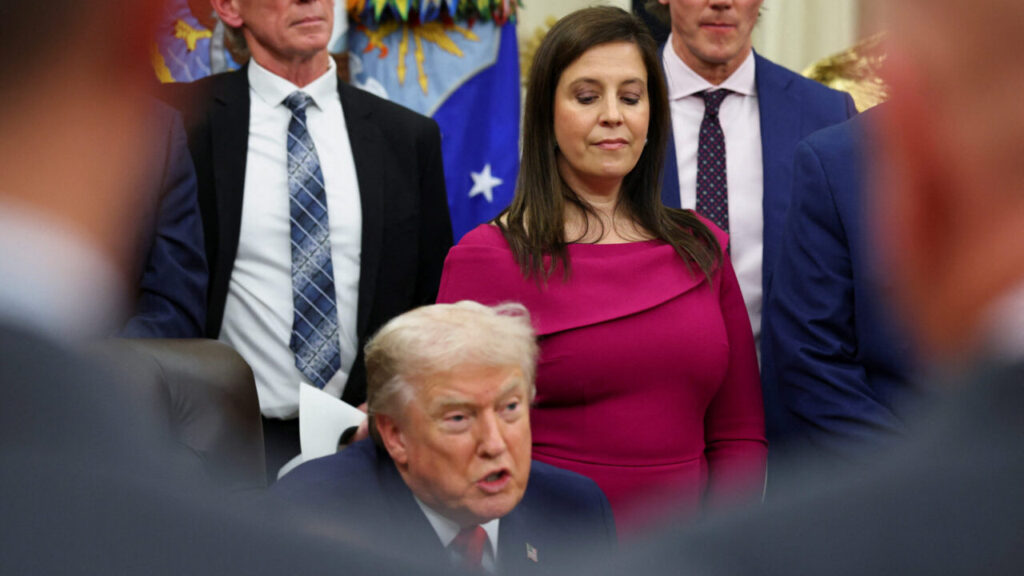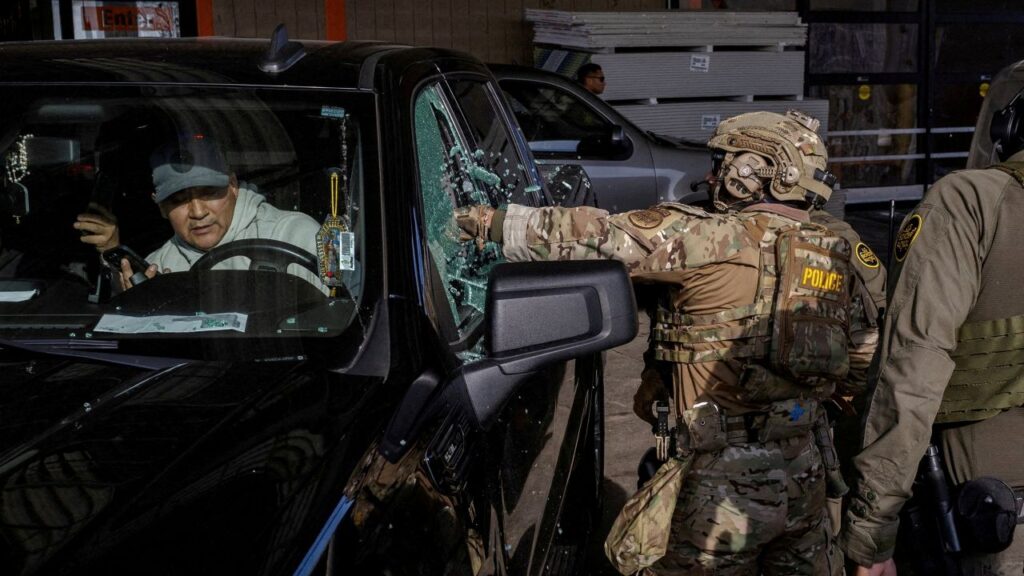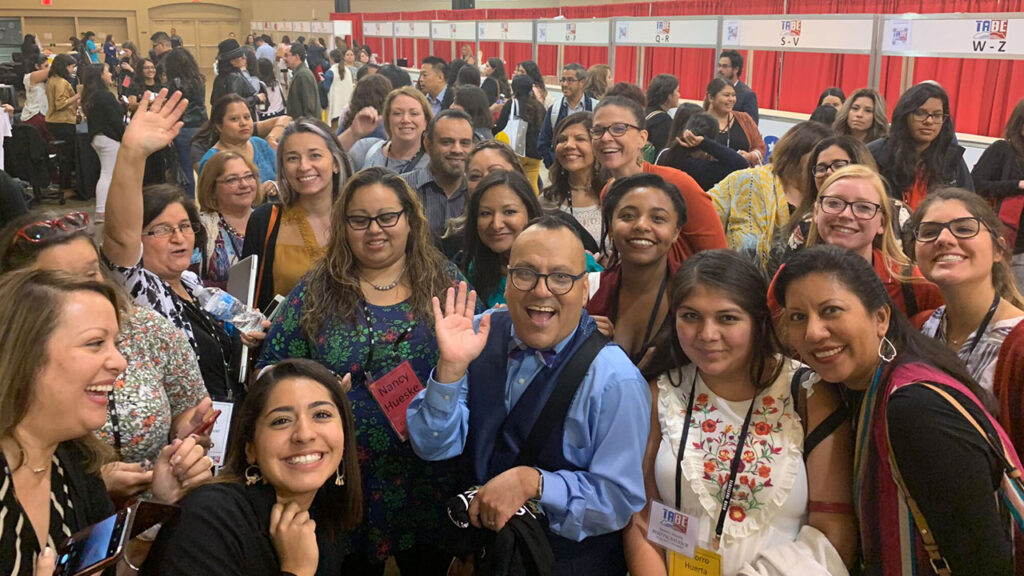Share
CHICAGO — Activist Hoda Katebi rarely takes a break from organizing. As tensions between the U.S. and Iran escalated in recent weeks, she became even busier.
On a recent Sunday afternoon, the 25-year-old Iranian American sat in her Chicago apartment shifting between monitoring her Twitter feed, taking phone calls and texting via encrypted messaging: She and other organizers had word that an Iranian student was being detained at O’Hare International Airport.
“This past week, I think I slept one night,” she said.
Across the U.S., Iranian Americans — many of whom have family in Iran — said they are experiencing renewed anxiety since an American drone strike killed a top Iranian general last month and Iran retaliated by launching ballistic missiles at U.S. forces in Iraq. They say they are concerned both about the safety of family members abroad and about Iranians who live in the U.S. facing extra scrutiny at airports as they return. At least 10 students have been sent back to Iran upon arrival at U.S. airports since August.
For many young Iranian Americans, this is a mobilizing moment: They are embracing their Iranian identity and beginning to identify as people of color in the U.S. as part of a larger struggle alongside other ethnic minorities.
For minorities in the United States — from Latinos to African Americans to Muslims and beyond — being viewed with suspicion is something that can happen at any time in a number of ways. A citizenship status questioned. A hate crime committed. Even simply a passing comment made that implies they aren’t welcome in the U.S., or deserving of the same treatment as white Americans.
Activists say the episodes make minorities feel separated — “othered,” as the recently coined verb puts it.
Deep Roots of ‘Othering’
The concept of “otherism” is hardly new. It has lingered in the U.S. for decades — centuries, even.
After the 9/11 attacks, Muslim Americans faced increased government surveillance and were viewed largely with suspicion. For black Americans, the legacy of chattel slavery lingers today in housing discrimination, mass incarceration and everyday instances of discrimination. Native Americans were forced to relocate to reservations in the West following the Indian Removal Act of 1830.
In each of these examples, both government policies and public perception served the function of “othering” particular ethnic communities.
More recently, many activists say the problem has grown since President Donald Trump was elected in 2016. And while European immigrants have become more accepted in American society, those from other parts of the world still face sometimes withering scrutiny. This was highlighted in Trump’s own remarks in an Oval Office meeting with lawmakers in 2018 when he disparaged Haiti and some African countries with coarse language and questioned why the U.S. would accept more immigrants from them rather than places like Norway.
“Trump has opened up a Pandora’s box of racism and bigotry that had been dormant,” said Domingo Garcia, president of the League of United Latin American Citizens, the nation’s oldest Latino civil rights organization.
“Now I see no difference from attacks on synagogues to an Iranian student being detained for 10 hours to a migrant baby from Central America being taken from her mother,” Garcia said. “It all originates from the same hatred and fear.”
Not Just the Trump Era
Destiny Harris, 19, an African American student from Chicago, said the “othering” goes beyond the Trump era. She was pulled into activism years ago after then-Chicago Mayor Rahm Emanuel, a Democrat, closed a number of under-enrolled schools in the city, primarily affecting black and brown students.
“As someone who is black, poor, queer and a woman, being a part of those marginalized communities is the very definition of being ‘other’ in this country, in terms of who belongs here and who doesn’t and who deserves to be treated with equality and who doesn’t,” Harris said.
Much of the inspiration for Katebi’s work stems from her identity. Her Twitter bio reads, in part: “angry daughter of immigrants.” She was born and raised in Oklahoma and, as a practicing Muslim who also wears the hijab, or headscarf, found herself having to constantly explain her identity to others.

“When the U.S. invaded Afghanistan, I was Afghan. When it invaded Iraq, I was Iraqi. Every time, I had to answer to all these identities. So I started researching and learning so that I could respond and have something to say, for my own protection and safety.”
She added: “The more you learn, the more you get angry.”
Last month, civil rights groups and lawmakers demanded information from federal officials following reports that dozens of Iranian Americans were detained and questioned at the border as they returned to the U.S. from Canada.
The Iranian American community is quite diverse — politically, socioeconomically and religiously. It includes Muslims, Jews, Zoroastrians and others with cultural ties to Iran and a range of views and opinions about leadership and politics in Tehran and Washington.
Iranian immigrants arriving in the U.S. after the 1979 Iranian Revolution were immediately confronted with hostility and discrimination. As a result, many sought to distance themselves from their national identity and the politics of their homeland by referring to themselves as “Persian.”
The blending of identity was further muddled by government forms, including the U.S. census. Many Iranian Americans have historically marked themselves as “white” when reporting their race for the census.
But many younger Iranian Americans are pushing back against that categorization in part because they realize that no matter how American they are, they are still seen as “forever foreigners” by American society, said Neda Maghbouleh, a University of Toronto assistant professor and an author who studies the politics of race within the Iranian American community.
“Iranian Americans have navigated a significant sense of exclusion at every stage of their story as a community since arriving as a critical mass post-1979,” Maghbouleh said.
Hoosh Afsar came to the U.S. from Iran 43 years ago, just before the revolution. Now 58, the Bethesda, Maryland, resident said the rhetoric surrounding the 2016 presidential election made him much more aware of racial injustices in the U.S.
“Before Trump’s election, I probably saw myself as more included and accepted. Now I feel that I was delusional,” he said.
Afsar credits his daughters with helping him understand the issue of race and inequality in the U.S. and identifying more as a person of color. He founded the Racism Awareness Project in 2017 to educate other Iranians and immigrants on the history of race in America.
New Alliances
Katebi feels inspired that more Iranian Americans are beginning to “wake up” and build bonds with other communities in their fight for equality.
Indeed, recent incidents of “othering” people of different minority groups — ranging from violent attacks to more subtle forms of prejudicial treatment — have highlighted this common plight.
Last December, an Iowa woman admitted to intentionally running over a 14-year-old girl because she believed the teen was Mexican. Last month, a Native American woman traveling through the Minneapolis-St. Paul International Airport said a Transportation Security Administration agent pulled the woman’s long braids and said “giddyup” while snapping them like reins of a horse. The following week, tellers at a Detroit-area bank refused to cash $99,000 in checks from a black Air Force veteran, suspecting him of fraud, and calling the police.
Some civil rights groups also note how the current climate is uniting people of different minority groups. For example, Garcia said the League of United Latin American Citizens and Council on American-Islamic Relations are preparing a joint letter in support of Iranian Americans.
Alborz Ghandehari, 31, whose parents are from Iran, said he saw support almost immediately. While recently protesting possible war with Iran, he was joined by black, white and Latino demonstrators. During the demonstration, a motorist drove by and yelled “terrorists!” at him and others.
“On the one hand, it was inspiring to see the support from others,” said Ghandehari, an ethnic studies assistant professor-lecturer at the University of Utah. “On the other, we are still constantly having to prove our loyalty to the U.S.”
[activecampaign form=29]



















